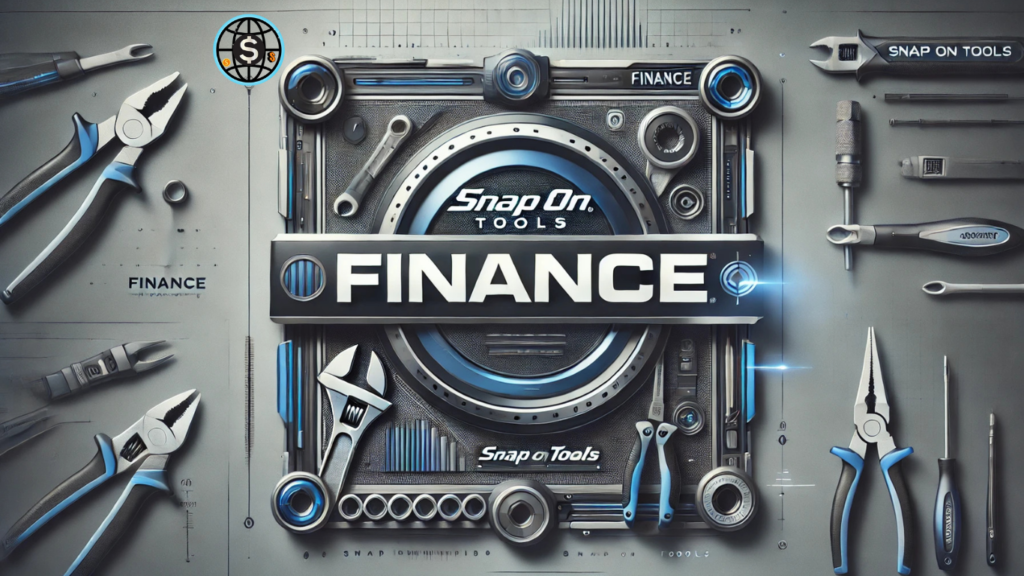Introduction
Snap-on tool finance Incorporated, often simply referred to as Snap-on, is a name synonymous with quality tools and equipment. But beyond its iconic brand and high-quality products, Snap-on is a complex financial entity with a rich history and a strategic approach to business. This article delves into the financial aspects of Snap-on, exploring its business model, revenue streams, financial performance, and future outlook.
A Brief History of Snap On Tools Finance
Founded in 1920 by William Kilborn and Joseph Johnson, Snap-on began as a manufacturer of socket wrenches. Over the decades, the company expanded its product line to include a wide range of tools and equipment for automotive, industrial, and commercial applications. Today, Snap-on is a global leader in the tool industry, with a strong brand reputation and a loyal customer base.
Snap On Tools Finances Business Model
Snap-on operates a unique business model that combines direct sales, franchising, and e-commerce. This multifaceted approach allows the company to reach a diverse customer base, including professional technicians, industrial workers, and DIY enthusiasts.
- Direct Sales: Snap-on’s iconic tool trucks are a hallmark of the company’s direct sales model. These mobile showrooms allow franchisees to bring their products directly to customers, offering personalized service and expert advice.
- Franchising: Snap-on has a robust franchise network, enabling entrepreneurs to own and operate their own tool businesses. Franchisees benefit from the brand’s strong reputation, extensive product line, and ongoing support from the company.
- E-commerce: In recent years, Snap-on has invested heavily in its e-commerce platform, providing customers with convenient online shopping options. This channel complements the company’s traditional sales channels and expands its reach to a broader audience.
Revenue Streams of Snap On Tools Finance
Snap-on generates revenue primarily through the sale of its tools and equipment. The company’s product portfolio is diverse, encompassing a wide range of categories, including:
- Hand tools
- Power tools
- Diagnostic and repair equipment
- Safety products
- Tool storage solutions
In addition to product sales, Snap-on also generates revenue from the sale of parts and accessories, as well as from the provision of repair and maintenance services.
Financial Performance
Snap-on has a strong track record of financial performance, driven by its focus on innovation, quality, and customer satisfaction. The company consistently generates significant revenue and profits, and it has a solid balance sheet with low debt.
Key financial metrics that investors often monitor for Snap-on Tools Finance include:
- Revenue: Snap-on’s revenue has historically grown steadily, reflecting the company’s strong brand and product offerings.
- Profit Margin: The company maintains healthy profit margins, indicating its ability to efficiently manage costs and generate strong earnings.
- Cash Flow: Snap-on Tools Finance generates substantial cash flow, which it uses to invest in its business, pay dividends to shareholders, and reduce debt.
- Return on Equity (ROE): A high ROE indicates that Snap-on is effectively utilizing its shareholders’ equity to generate returns.
Future Outlook
Snap-on is well-positioned for future growth, driven by several factors:
- Strong Brand Reputation: The company’s strong brand reputation and customer loyalty provide a solid foundation for future success.
- Product Innovation: Snap-on continues to invest in research and development to introduce innovative products that meet the evolving needs of its customers.
- Global Expansion: The company has opportunities to expand its presence in emerging markets, particularly in Asia and South America.
- E-commerce Growth: The increasing adoption of e-commerce provides a significant growth opportunity for Snap-on.
However, Snap-on also faces challenges, such as:
- Economic Conditions: Economic downturns can impact demand for tools and equipment, particularly in industries such as automotive and construction.
- Competitive Landscape: The tool industry is highly competitive, with a number of established players and emerging brands.
- Supply Chain Disruptions: Global supply chain disruptions can impact the availability of raw materials and components, affecting production and delivery times.
Conclusion
Snap-on is a financially sound company with a strong track record of growth and profitability.
Its unique business model, diverse product offerings, and strong brand reputation have enabled it to maintain a leading position in the tool industry. As the company continues to innovate, expand its global footprint, and embrace e-commerce, it is well-positioned to capitalize on future growth opportunities and deliver value to its shareholders.









